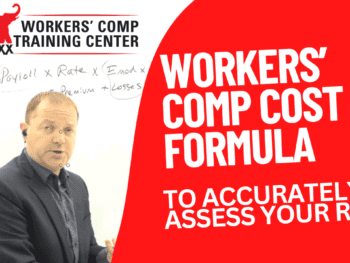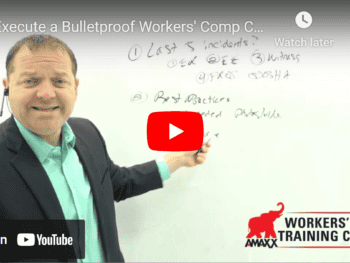Protecting the Bottom Line and Increasing Productivity IDM Program Implementation Phases
Prior to implementing an IDM program (Integrated Disability Managment), it is important to have a clear understanding of what drives absenteeism in your organization. Is it primarily occupational injuries or illnesses, or non-occupational disabilities? In order to determine what drives absence, you need to quantify and measure the costs resulting from all lost-time absences.
Unfortunately, many employers either do not, or cannot, capture these costs. There are a number of lost productivity calculator tools that can estimate your organization’s lost-productivity costs.
Armed with information, you can the now work through the following steps:
Click Link to Access Free PDF Download
“13 Research Studies to Prove Value of Return-to-Work Program & Gain Stakeholder Buy-In”
1. Cost Benefit Analysis & Business Case Development
Since integrated disability management is a major corporate initiative, senior management will, most likely, require you to carefully estimate projected costs, projected savings and calculate a return on investment (ROI). Because this first step is so critical, many companies use consultants to help analyze the data, identify costs and estimate potential savings. In addition, a consultant can help you build an integrated disability management business case/plan for presentation to senior management. If you choose not to use a consultant, there are many resources (websites, books, white papers, case studies) available to help guide you through the process.
2. Determine And Set Clear Goals For Integrating Disability Management
It is important to set clear goals for your IDM program, such as reduced costs, increased productivity, more efficient benefit plan administration and improved employee morale.
3. Program Design
During this phase, you will decide on the structure and administration of the integrated program, including claim reporting, claim management, integrated claim system and data capture, medical case management and return-to-work programs. In addition, decisions must be made on which functions will be performed internally, by an outside vendor(s) or through some combination of efforts.
4. Vendor Evaluation and Selection
A Request for Proposal (RFP) process should be used to solicit capability and pricing information from vendors. Many brokers and consultants offer extensive web-based RFP programs that ensure proposal consistency, making it easier to make an apples-to-apples comparison. A vendor’s geographic scope, claim intake system, caliber of claim professionals and training, and system capabilities should all be carefully reviewed and considered. During the evaluation phase, you should interview the vendors, conduct site visits and call both existing and former client references. Consider requiring vendor performance guarantees (for both program implementation and on-going service), where appropriate.
5. Implementation
You may choose to implement integrated disability management in total, gradually, by using a modular approach, or as a pilot program at certain plants or divisions. All changes should be clearly communicated to employees well in advance of implementation. Special training should be given to all supervisory and management employees who will be impacted by the new program.
FREE DOWNLOAD: “13 Research Studies to Prove Value of Return-to-Work Program & Gain Stakeholder Buy-In”
6. Monitoring/Evaluating Program And Vendor Service Levels
Establish metrics to measure regularly the results of the program and to track vendor service levels (via surveys). Some possible quarterly Key Performance Indicators include total costs, claim counts and number of absence hours, in the aggregate, and broken out by business unit, division or location.
Integrated Disability Management Resources
http://reduceyourworkerscomp.com/resources.php for: Integrated Benefits Institute Disability Management Employer Coalition Employer Measures of Productivity, Absence and Quality
Author Robert Elliott, executive vice president, Amaxx Risks Solutions, Inc. has worked successfully for 20 years with many industries to reduce Workers’ Compensation costs, including airlines, health care, manufacturing, printing/publishing, pharmaceuticals, retail, hospitality and manufacturing. He can be contacted at: Robert_Elliott@ReduceYourWorkersComp.com or 860-553-6604.
We accept articles about WC cost containment.
Visit Our Websites: Reduce Your Workers Comp: www.ReduceYourWorkersComp.com/
Do not use this information without independent verification. All state laws vary. You should consult with your insurance broker about workers’ comp issues.
©2009 Amaxx Risk Solutions, Inc. All rights reserved under International Copyright Law.













